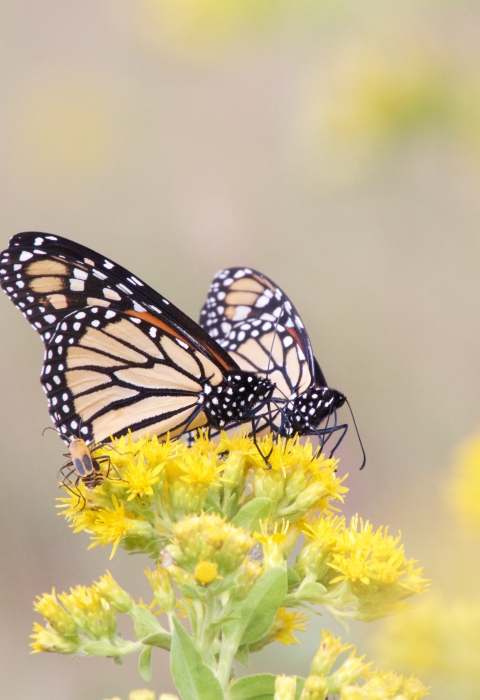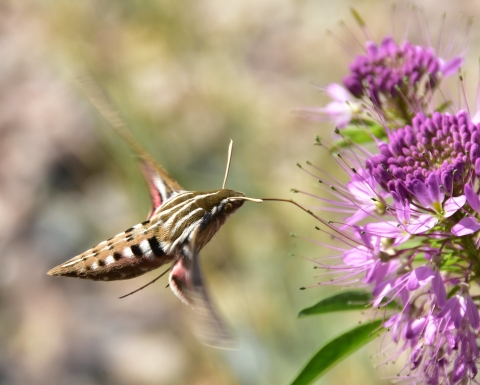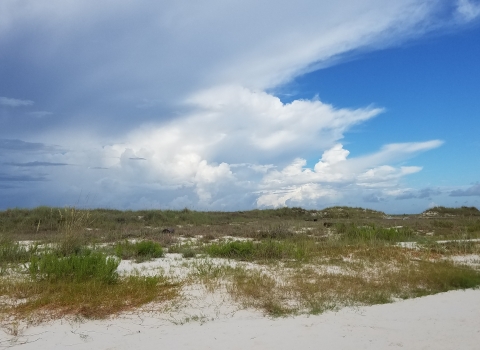No matter how small your space, you can provide resources for pollinators by planting a pollinator garden. Don’t have a yard? Plant the garden on your balcony.
A balcony garden will add a beautiful green space to your house or apartment while providing much-needed habitat for pollinators. Just think: If every household in the United States planted one pollinator plant, that would provide more than 120 million additional plants for habitat.
Planting a pollinator garden not only supports pollinators; it also benefits people. Research shows that time spent in green spaces can help protect against mood disorders, depression and stress.
To get started on your balcony garden, follow these five steps:
Step 1: Choose your location.
Choose a spot on your balcony that gets the most sun. Most pollinator plants require full sun. However, if your balcony is in a shady location, that’s okay too. Certain pollinator plants grow in the shade.
Step 2: Determine the size of your garden.
Decide what size garden your balcony can accommodate. Allow space for tables and chairs so that you can sit in your garden and enjoy it without feeling crowded. Use chalk or painter’s tape to outline your garden space and get a feel for how it will fit.
Think vertically as well as horizontally. You can train vines around your railings or up a trellis, and use wall planters or a shelf for smaller plants. Window boxes along railings can also accommodate pollinator plants. In your design, consider the maximum plant height that your balcony can contain. Once the space feels right, measure it before choosing plants.
Decide how much time you want to spend on maintenance. A larger garden requires more time for watering, pruning, and winterizing. Remember: Pots dry out more quickly than soil in a backyard. You can frost-proof containers by adding mulch around the pot.
Step 3: Choose native plants.
Decide which plants you want before choosing containers so that you get the correct size planter for each plant. Native plants are easier to care for because they are adapted to the local climate. They also provide a good food source for pollinators.
Refer to these pollinator “recipe cards” for a list of native plants in your area.
Different species of plants bloom at different points in the growing season. Choose plants with a variety of bloom times to provide pollinators nectar as the seasons change. Choose plants with a height and width that will fit into your garden space. Accommodate for the space that planters will take by adding an extra three inches per plant.
Step 4: Gather materials.
Choose planters about two inches larger than the plant. Use the correct size pot. A pot too large can cause root rot and might kill the plant. A pot that is too small inhibits plant growth. Make sure the planter has drainage holes to avoid root rot.
Other materials and tools you may need:
- High quality garden soil
- Hand trowel
- Hand cultivator
- Pruner
- Gardening gloves
- Watering can
- Kneeling pad
- Trellis for climbing plants
- Twine to train vines
Step 5: Plant and arrange your garden.
Fill the bottom of your pot with potting soil. Carefully remove the plant from the container. Gently loosen the plant’s roots. Place the plant in the planter and cover the root ball with soil and water well.
Arrange plants so that they get maximum sun exposure, with the tallest plants in the back to the shortest plants in front. For an example of a garden design, see our Balcony Pollinator Garden Plan.
Now that your hard work is done, sit in your garden, enjoy a cup of coffee or a bit of chocolate and reap the benefits. Today, you helped a pollinator, did something good for your mental health and provided yourself a beautiful green space to enjoy.







